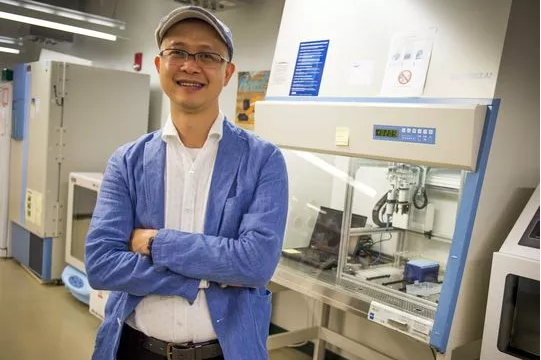UT researcher’s work aims to identify, annihilate diseases with computers


Currently, “the treatment they have might not be applicable” if a virus or bacterium mutates, Trinh said – such as when bacteria become resistant to antibiotics. “The technology we develop will allow us, at the DNA level, to identify and inactivate them even before they have a chance to evolve.”
Trinh started by developing complex algorithms that can quickly analyze molecules, identify them as a certain illness-causing pathogen, then attack the pathogen by interfering with its genetic makeup. Since July, he and his students – one graduate student and five undergrads – have been testing actual cell samples to make sure the algorithms will work as predicted.
His lab at UT is now equipped with a robotic device that will help ensure samples are consistent and accurately counted, and equipment that allows testing of thousands of samples simultaneously.
“This is the point where we use experiments to validate (the software’s calculations), to test them out,” Trinh said. “You have to learn from the system. We don’t have to spend a lot of time in the lab. The ultimate goal is machine learning.”

In time, Trinh, who came to UT in 2011, hopes his work will allow medical personnel to take a blood sample from a human, correctly and quickly diagnosis what’s making that person sick, and use a machine to eliminate that pathogen within weeks. It would be useful not only during epidemics – from Ebola or Zika to annual flu outbreaks – but also during food poisoning incidents or if terrorists are suspected to have weaponized an organism and released it in an area.
“What we want to do is to develop a system that can be applied across multiple pathogens,” he said. The award “supports proposals that are ‘high-risk and high-rewarding’ – meaning that if things are successful it can have a powerful change to our normal way of thinking. … “It’s a challenging and exciting project.”